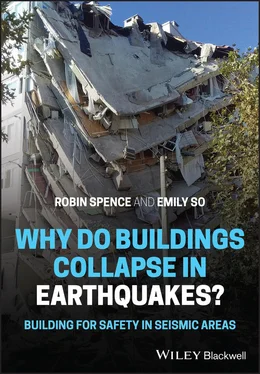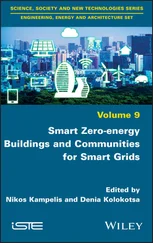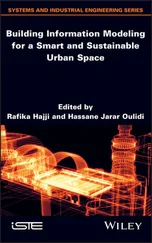We especially appreciate the painstaking work of Charlotte Airey in developing the building construction type and damage mode drawings used in Chapters 5and 6.
We also greatly appreciate the contributions made by the global panel of experts who responded to the surveys of national successes and failures reported in Chapter 8. An acknowledgement to them is given at the end of that chapter. We would like to acknowledge the help of our colleagues at EEFIT, to Allan Brereton and the committee for their help in making available appropriate illustrations. And to our colleagues at Cambridge Architectural Research and the Department of Architecture at the University of Cambridge for their support of the book.
Finally, we would like to express our personal thanks to our families. From Emily : my gratitude to Alex and Clara for being the perfect lockdown husband and baby during this challenging year. From Robin : my thanks as always to Bridget for her unfailing support and wise counsel through this, and so many projects in the past.
1 Introduction: Why This Book
1.1 Earthquakes – An Underrated Hazard
Earthquakes have been a threat to human habitation throughout history, but until relatively recently, their causes were poorly understood. In the pre‐scientific era, they were commonly ascribed to divine intervention. By the time of the Lisbon earthquake in 1755, there were many who understood that earthquakes had natural causes, but the mechanism remained unexplained, and the supernatural explanation was widely proclaimed, especially from church pulpits (Udias and Lopez Arroyo 2009). And over 150 years later, according to observer Axel Munthe (1929), the inhabitants of Messina, destroyed by a massive M7 earthquake in 1908, cried ‘Castigo di Dio’ (‘punishment from God’).
Only with the development of plate tectonics in the twentieth century has it become understood that earthquakes are associated with active faults in the earth's crust, with most of the largest occurring at the boundaries of the tectonic plates as they interact with each other (as explained in Chapter 4). We can now identify with some precision whereabouts on the earth's surface large earthquakes will occur. From measurements of the movements at plate boundaries, and from the historical record, we can make estimates of the largest magnitude event which can occur on a fault section, and approximately, the frequency with which events of different magnitude will occur. But the largest events commonly have return periods of several centuries or more (Bilham 2009), and science is still unable to predict, even to within a few decades, when the next large earthquake on any fault section will occur.
There is some evidence that the global earthquake mortality rate (deaths per 100 000 of the world's population) has been rather gradually reducing over the last century or so. But it is a very slow rate of improvement, and the variation from decade to decade is very large. The first decade of the twenty‐first century was a bad one, with several earthquakes resulting in more than 50 000 deaths. Yet, over the same timescale, death rates from many other causes, such as infectious diseases and road accidents, have been very significantly reduced ( ourworldindata.org/causes‐of‐death2020). This has been made possible with the introduction of public health programmes and protection measures, backed by government legislation and action programmes, but supported and implemented by the general public. Such programmes could similarly be applied to reduce earthquake risk, but in many countries most at risk, this has not so far happened. Why is this?
The greatest impact from earthquakes is nearly always the damage to buildings (and other built artefacts – roads, buildings, dams) from the ground shaking caused by the propagation of the earthquakes' waves through the earth's crust, which can result in destruction over a wide area. Over the twentieth century, understanding the nature of ground motion and the way in which this is transmitted through structures has enabled engineers to develop ways to build buildings which are able to withstand the expected ground shaking with limited damage. This understanding, gradually increasing through the development of structural engineering theory and practice, combined with detailed field investigation of the effects of successive earthquakes has enabled codes of practice for building design to be developed, and these are nowadays mandatory for new construction in most cities of the world.
But, as the world's population grows, and urbanisation increases in pace, there are many places where new buildings are being constructed without any reference to good engineering practice for earthquake resistance.
This is partly because those responsible for constructing the new buildings are unaware or possibly unconcerned that a large earthquake may occur any time soon, and building controls are lax. It is also due to lack of education, information, skill and sense of urgency on the part of builders and building owners (Bilham 2009; Moullier and Krimgold 2015).
In rural areas of many poor countries, buildings are largely constructed using highly vulnerable materials such as adobe and unreinforced masonry. Poverty and lack of understanding, combined with a vast demand for new dwelling places, are thus fuelling the creation of a series of future disaster scenarios (Musson 2012).
In order to understand why buildings collapse in earthquakes and to find out what we can do about it, we must look at each of the three ingredients of the problem: earthquakes, buildings and people.
1.2 Earthquakes, Buildings, People
One of the reasons why earthquake risk does not get acted on is because it is not well understood by the public. Although the likely locations of large earthquakes are now known, the timescale of their recurrence is very long, and for most people at risk the last occurrence of ‘the big one’ for which they need to be prepared is many centuries ago, often before the present cities existed. People may be aware that they are living in an earthquake zone but fail to appreciate the possibility of events much larger than recent experience. In 2008, a modelling exercise, the California Shakeout, was done to support earthquake protection action for Southern California, which is threatened by a large earthquake on the San Andreas Fault (Jones and Benthian 2011). Lucy Jones, who led the modelling team speaks of the ‘normalisation bias, the human inability to see beyond ourselves, so that what we experience now or in our recent memory becomes our definition of what is possible’. Seismologists had identified much greater earthquakes in the past than those in recent memory, but the last great earthquake on that section of the San Andreas Fault was in 1688. The modelling exercise, based on a plausible, but by no means worst‐case scenario magnitude 7.8 earthquake on the southern section of the San Andreas Fault, showed that around 1500 buildings would collapse, and 300 000 would be severely damaged, causing around 1800 deaths and $213 billion losses. Fires would break out and could become uncontrollable. And the disruption caused to roads and pipelines would cause massive disruption to business, lasting for months. This modelling exercise led to a huge public awareness and preparation programme which has resulted in much reduced risks in California over the past decade.
But considerably more devastating consequences face many of the growing cities in other earthquake zones, particularly in Asia. The southern edge of the Eurasian Plate, stretching from the Mediterranean to China, and including Myanmar and Indonesia, is responsible for 85% of the world's historic earthquake deaths. And this is a region in which cities are today growing rapidly both in size and in number, fuelled by global population rise and urbanisation. Seismologist Roger Musson points to the risk in Tehran, today a city of 12 million people. The last major earthquake on the North Tehran Fault, passing close to the city centre, was in 1834 at a time when Tehran was a small town: an earthquake of M > 7 hitting Tehran today could cause as many as 1.4 million deaths. And seismologist Roger Bilham (2009) has estimated that a direct hit on a megacity (>10 million population) somewhere in the world once a century is now statistically probable, with a possible death toll exceeding one million, because of the combination of hazardous locations and structural vulnerability. The World Bank estimates that three billion people will live in substandard housing by 2030. By 2050, the UN projects that two‐thirds of the world's population, around 7 billion people, will live in urban areas.
Читать дальше












